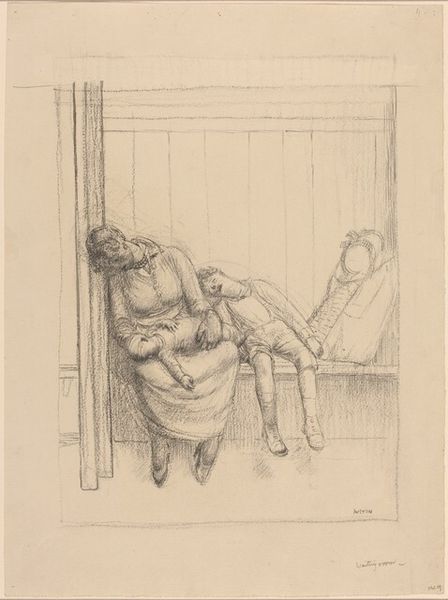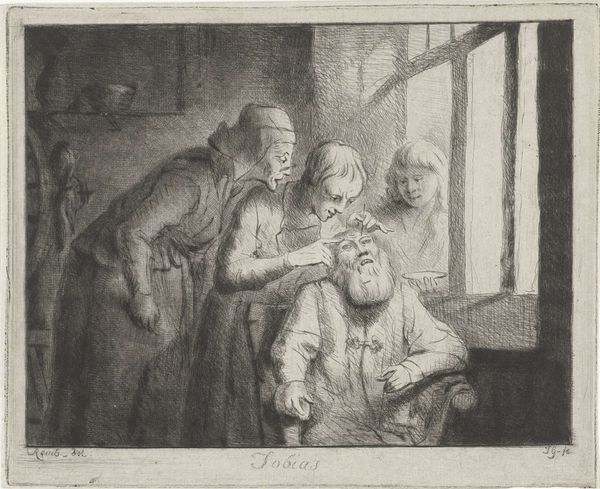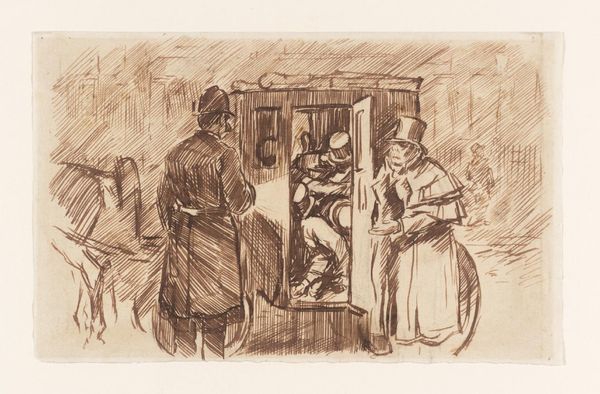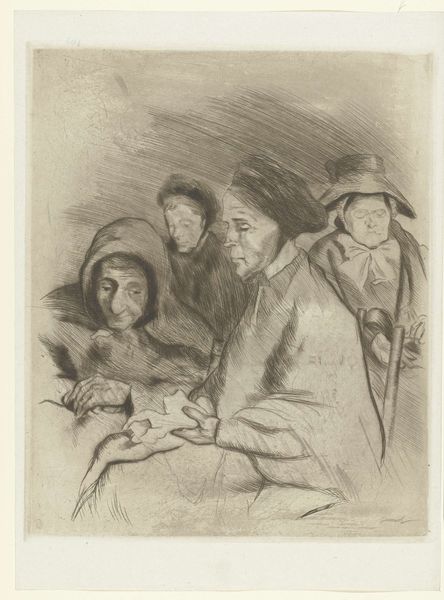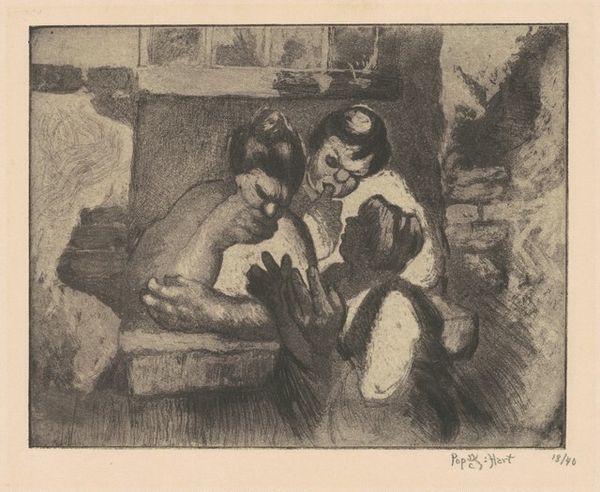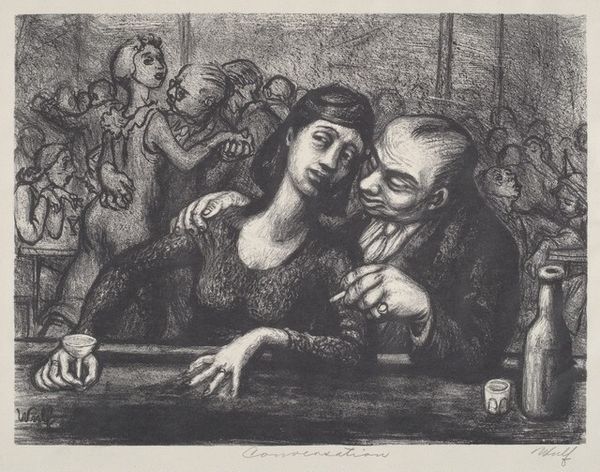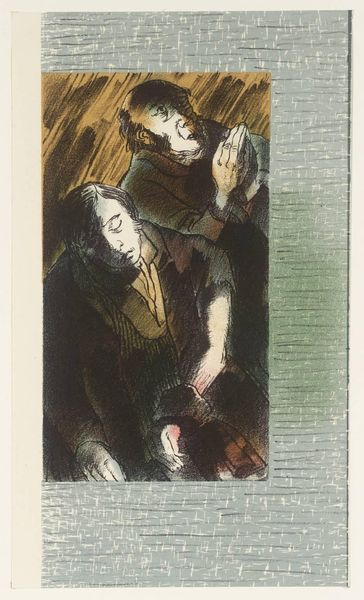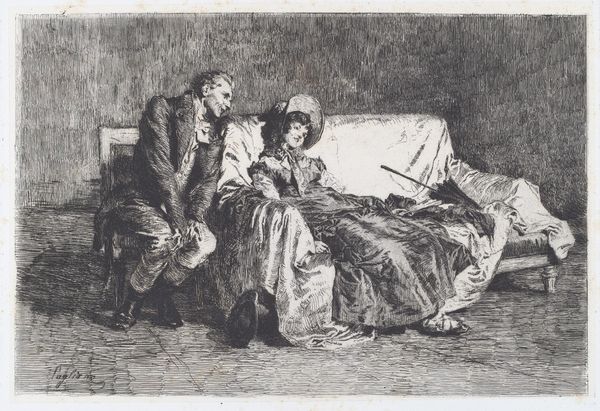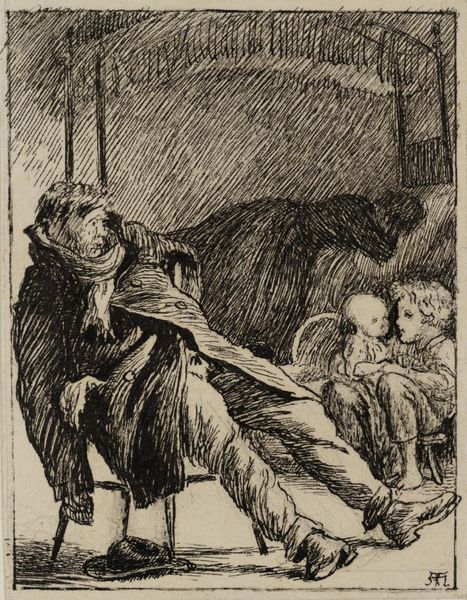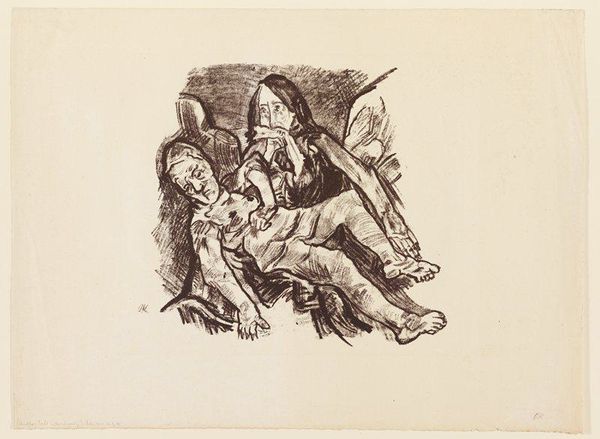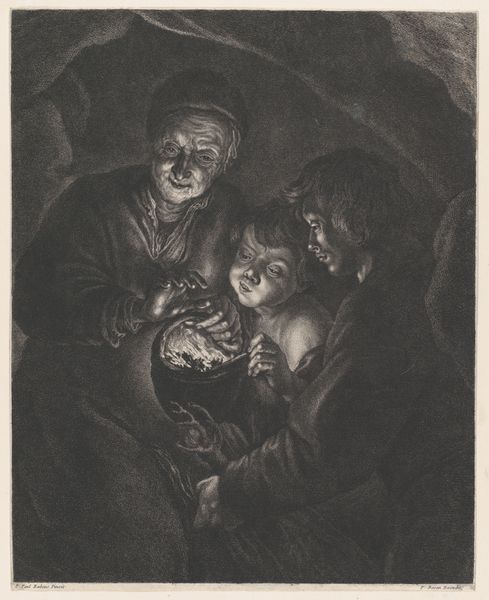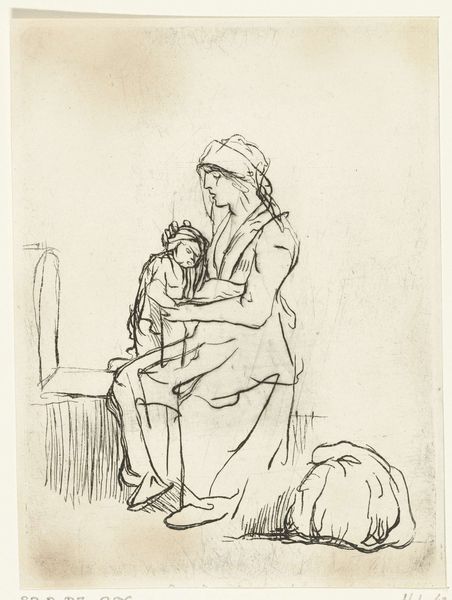
drawing, print, pencil, graphite
#
pencil drawn
#
drawing
# print
#
pencil sketch
#
charcoal drawing
#
figuration
#
social-realism
#
pencil drawing
#
pencil
#
graphite
#
pencil work
#
genre-painting
#
realism
Dimensions: Image: 200 x 255 mm Sheet: 240 x 300 mm
Copyright: National Gallery of Art: CC0 1.0
Curator: "Two A.M.", created around 1935 by Dorothea Loewenstein, gives us an intimate glimpse into a family portrait rendered with pencil or graphite. What's your immediate read on this drawing? Editor: Exhaustion, pure and simple. The slumped postures, the heavy eyelids – it's a scene anyone who’s ever traveled late at night can recognize instantly. There is tenderness, yes, the mother leaning against the father and son against the mother. Curator: It certainly resonates. Loewenstein captures a feeling of shared weariness that’s quite universal, especially poignant during the Depression era when this was made. Look at the details, or the lack of them – those sketchy lines conveying clothes, fatigue, and an uncertain reality. It speaks of fragility and dependence on each other in difficult circumstances. Editor: Precisely. The minimal setting amplifies that. They're pressed together against an undefined space. Public transport becomes this temporary haven, a space reflecting a wider societal unease. I note the American flag being held by the boy. What do you think? Patriotism even as everyone seems downtrodden? Curator: Or perhaps it signifies resilience, a quiet hope amidst the gloom? The small flag maybe hints at a more positive future he may experience. Note also the deliberate obscuring of the man’s face. This is a figure weighed down by providing and his posture is also slumped; he has not, as in traditional representations of the father-protector, offered his shoulder for the mother. It removes any sense of easy individualism and, instead, focuses on the universal aspect of these types of experiences. The details speak volumes about its cultural roots. Editor: Yes, and Loewenstein uses a social realism approach here – very evocative! Instead of glamorizing or judging, she depicts daily existence for ordinary people. It makes it both documentary and deeply human. It captures what matters. Curator: Absolutely. And looking closer I love how she plays with shadow and light too; the areas of concentrated shading that pull certain aspects into sharp relief. This heightens the visual drama, focusing our gaze, almost urging empathy. Editor: Thinking about our times, what do you think this scene says to current viewers? I find it has new layers after Covid! Curator: A reminder perhaps of resilience when resources are challenged; that people carry on the best they can even when all feels uncertain. It celebrates familial bonds which provide safety and protection even within difficult journeys. Editor: Well said! Overall, a really moving piece reflecting historical challenges.
Comments
No comments
Be the first to comment and join the conversation on the ultimate creative platform.
